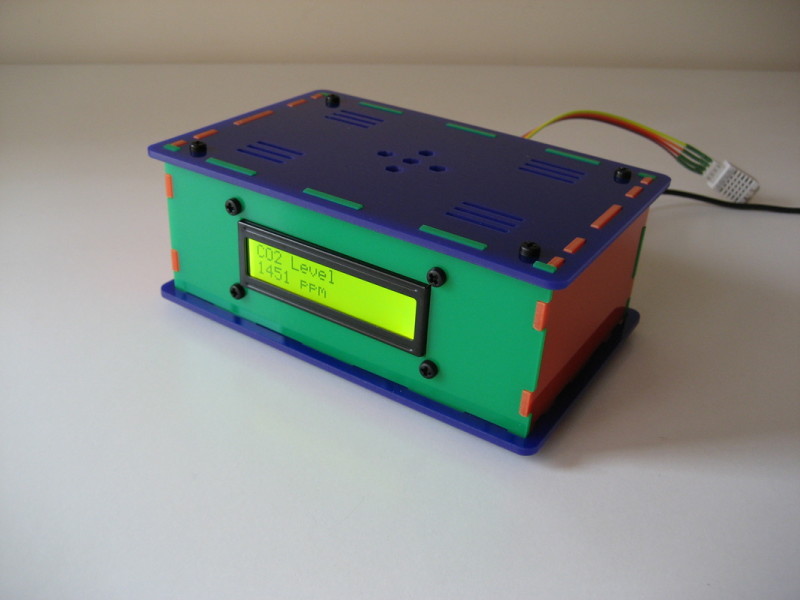Coming from Hong Kong, the LiV Pi is a curious, Raspberry Pi-compatible product. Marketed somewhat as a device for businesses to keep an eye on the air quality inside their buildings, it’s a product that’s been created mainly to suit the situation in Hong Kong. The city has some serious air pollution problems, which you can read more about elsewhere. So, with that and general building safety in mind, it does start to make more sense.
The full article can be found in The MagPi 46
What the LiV Pi boils down to is a large, colourful acrylic case with a two-line LCD display on the front. Inside, you’re supposed to install a Raspberry Pi along with the specially provided add-on board that functions almost like a HAT. This HAT allows you to plug in some supplied sensors and a real-time clock, and then you’re basically ready to go.
LiV Pi ships with three main sensors: a carbon dioxide (CO2) sensor, a temperature/humidity sensor, and an air pressure sensor. The CO2 sensor is the main component here, and the LiV Pi team explain on their website that a rise in CO2 levels in the air is a good indication of air quality, since it’s likely to have bought much nastier air with it. The humidity and temperature sensor allows you to keep track of the environment indoors in other ways, and it sounds like the barometric pressure sensor was thrown into the system just because they could.
There’s some fun to be had constructing the full LiV Pi. On the website, you can buy a bare-bones kit of the sensors and board (pre-soldered or not). Alternatively, you can get the full version with a case, which is what we’re looking at here. The price does seem quite steep; $350 for the full LiV Pi is not an easy number to swallow, although it’s not ‘targeted’ towards consumers per se.
The construction is quite simple. With the full kit you get the acrylic case, which almost snaps together and is made up of six pieces. The snapping isn’t very firm, so there are screws and spacers to keep it together, making it fairly easy to assemble and disassemble when needed. This version also comes with everything already soldered up on the boards. Then again, there’s not a huge amount of soldering to be done with the basic kit version (from $35): the odd resistor and connector is all that’s required, with the trickiest bit being the 40‑pin connector for the GPIO.
Once the case is together, it’s just a matter of plugging the sensors into the correct ports, putting a battery in the RTC, and hooking it up to the LCD screen. The guides online and the markings on the boards show more than enough to do this accurately. Finally, you’ll need to install an SD card with the custom LiV Pi image before packing it all in the case. With the full pre-soldered kit this is all quite quick; in fact, writing the SD card will take longer than constructing the rest, so you should probably get that started beforehand.
The software requires a bit of setup to get working at full capacity. You need to make sure it has a network connection and that the hardware clock is working, and you can also set up email and other message alerts. This does allow you to keep the LiV Pi in its box most of the time, though; you can dial in with a browser to view data and get email updates about the current readings instead of manually plugging it back into a monitor. The whole system is pretty complete and is continually getting updates; at the time of writing, they had recently added Raspberry Pi 3 support and have even begun selling the full kit with a Pi 3. So, for the moment, it’s well supported and with upgrades to come in the future.
However good it is, with decent sensors and good software to keep an eye on them, we do wonder how useful a device this will be. We can definitely report that it does what it sets out to do: it monitors the air, and it does it well. If this is something you or a business have been looking for, then it’s definitely worth a look due to its extra network connectivity and customisation over other solutions.
Last word
4/5
It has very limited uses and is quite expensive, but the design is good and it does what it sets out to do very well. Building it is pretty fun, too.








